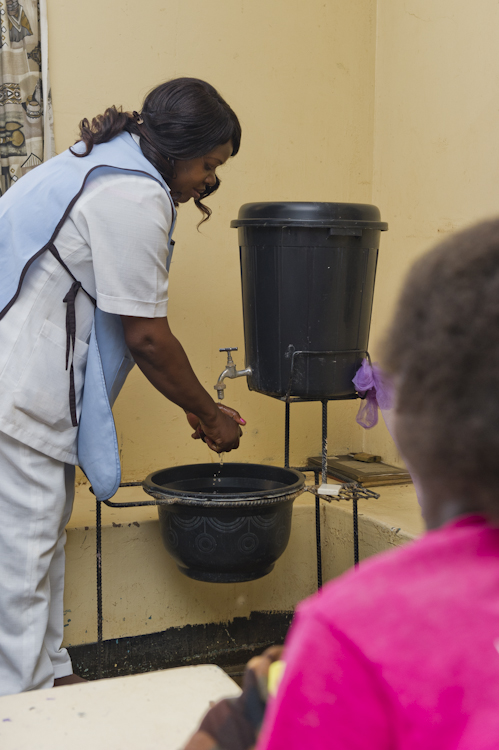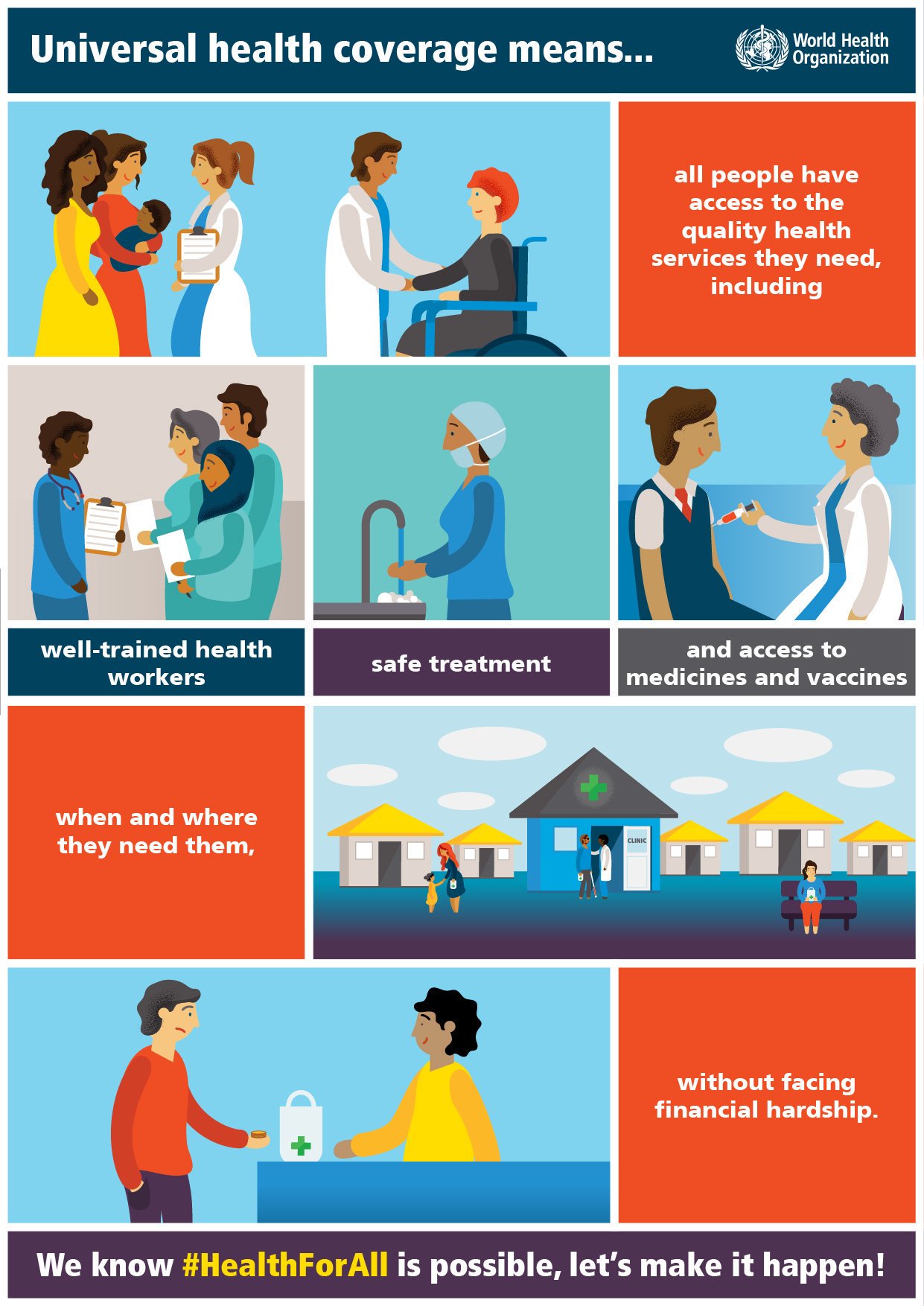
Health for all and clean hands for all go – well, hand in hand

A nurse in Zambia washes her hands before she demonstrates how to prepare oral rehydration solution. Photo: PATH/Gareth Bentley.
See this post on the Global Handwashing Day website.
Take a moment to picture the last time you went to the doctor’s office. As you hold it in your mind’s eye, take a look around and notice the elements that made you feel comfortable with the quality of care at the facility. For me, signs of cleanliness top the list: safe disposal of medical equipment, the use of latex gloves or hand sanitizer between handwashings, and an alcohol swab to the arm before a vaccination or a blood draw, to name a few.
So it’s no wonder to me that in the White Ribbon Alliance’s survey to assess women’s top reproductive and maternal healthcare priorities, water, sanitation, and hygiene (WASH) topped the list, second only to respectful, dignified care. It’s also no wonder given that the need is so great: an expansive study by the World Health Organization revealed that more than a third of health facilities around the globe lack water and soap for handwashing.
Last month, world leaders adopted a high-level United Nations Political Declaration on universal health coverage (UHC), the most comprehensive set of health commitments ever adopted at this level. UHC means that everyone has access to well-trained health workers and to basic supplies like medicine, safe treatment, and vaccines. These building blocks of primary health care – or PHC, the most basic package of essential health services and products needed to prevent disease, promote health, and manage illness – are the foundation for UHC.
 Hygiene (and its WASH acronym companions, safe drinking water and sanitation) spans both disease prevention and safe treatment. Primary health care (and by extension, UHC) is simply not possible without it. Too often, WASH elements like hygiene are seen as separate from UHC, but the preventive aspects of primary health care are gaining traction as dangerous disease outbreaks like Ebola and cholera dominate headlines. These public health crises throw into harsh perspective what science already knows: to cultivate healthy communities, investments in treatment alone will never be enough.
Hygiene (and its WASH acronym companions, safe drinking water and sanitation) spans both disease prevention and safe treatment. Primary health care (and by extension, UHC) is simply not possible without it. Too often, WASH elements like hygiene are seen as separate from UHC, but the preventive aspects of primary health care are gaining traction as dangerous disease outbreaks like Ebola and cholera dominate headlines. These public health crises throw into harsh perspective what science already knows: to cultivate healthy communities, investments in treatment alone will never be enough.
Consider diarrhea, a leading issue in child health: a lack of WASH is responsible for more than half of these cases. Investing in prevention is all the more urgent as more children survive multiple episodes and struggle with long-term physical and cognitive growth shortfalls. Such outcomes due to a lack of WASH are, in fact, health consequences, and handwashing with soap could prevent almost half of these infections.
Coordination between sectors is easier said than done, and there are as many ways to do it as there are government structures. Still, coordination between WASH and UHC champions must be a priority at the global, national, and local level if we are to achieve the ambitious targets set in the UN declaration. One of the most obvious nexus points is WASH in healthcare facilities, which creates a safe environment for both health workers and patients, especially during disease outbreaks. Special immunization campaigns, such as oral cholera vaccine, and routine immunization appointments represent a strategic teaching moments for families about hygiene practices, as WaterAid successfully demonstrated in Nepal. Better community hygiene is a strong line of defense against future outbreaks and the everyday consequences of repeated infections, and families can act on it right away as longer-term infrastructure investments take shape.
In health and in life, the most basic human needs are universal. And universal health coverage can’t live up to its name if it doesn’t include WASH, a foundational health need for every human being on the planet.


